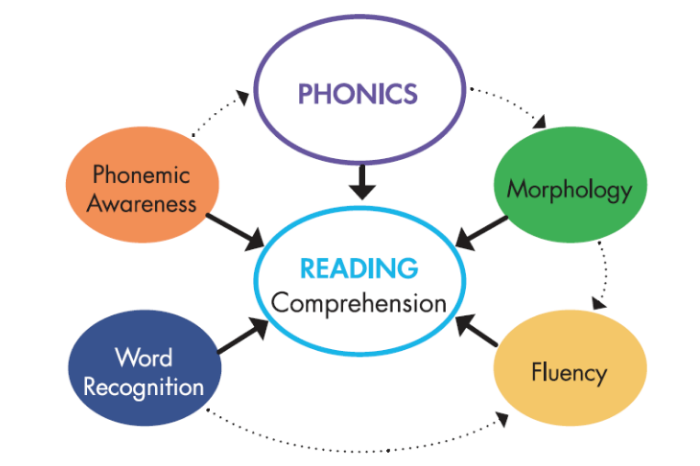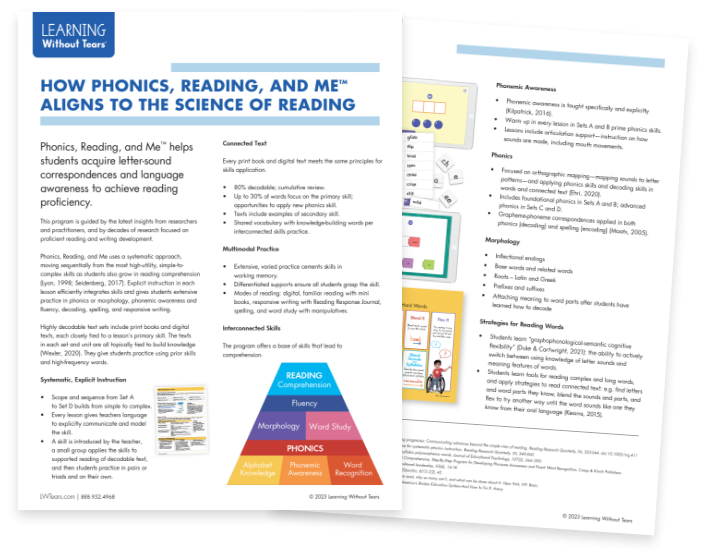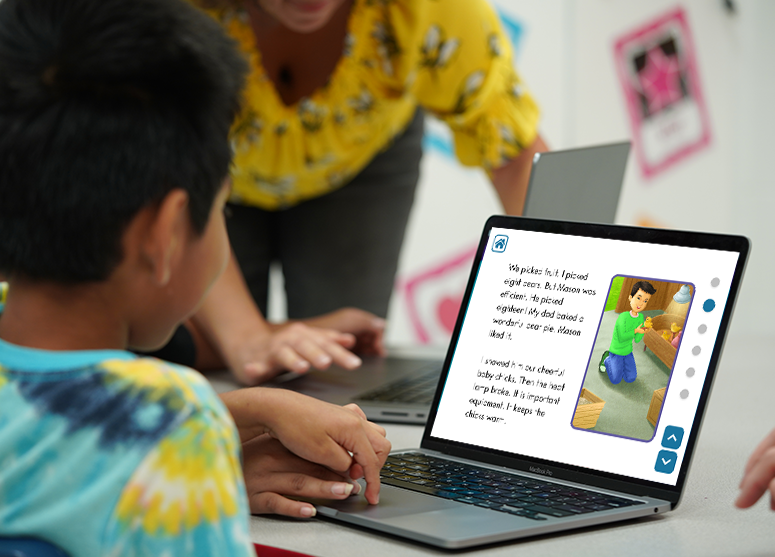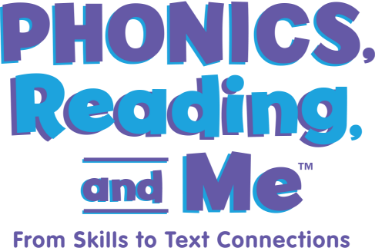Discover
PHONICS, READING and ME
Phonics, Reading,
and Me Program Overview
Get a closer look at this breakthrough K–3 reading program.
Reading is not a natural process and does not come easily for all students. The instruction in Phonics, Reading, and Me™ is guided by the Science of Reading for how students learn to read best.
Phonics, Reading, and Me:
- Prioritizes phonics and word study skills
- Focuses on rich fictional and informational texts that provide ample word and phonics skills practice
- Provides multiple opportunities to read, talk, and write
- Teaches high-utility phonics reading skills by reviewing words with similar patterns
- Solidifies learning through multimodal reading practice using letter tiles, responsive writing, mini student books, digital activities, and more
- Connects reading and, writing to, language

How Phonics, Reading, and Me Aligns to the Science of Reading

Phonics, Reading, and Me™ is structured to teach phonics skills systematically in the service of reading comprehension. The program’s scope and sequence focuses on the essential reading skills students need to become proficient, so that small-group time is efficient and effective.
Systematic — The program teaches phonics systematic to help students progress from simpler to more complex skills and achieve reading proficiency.
Explicit — Each lesson provides teachers with explicit teaching routines to reinforce phonics and word study skills.

Students Learn Along Same Path
Toward Proficiency
Phonics, Reading, and Me is built on the belief that all students have the right to read with confidence. Some students may need extensive direct instruction, modeling, or repetition. But all students benefit from purposeful practice and a high volume of reading.
- All students read the same highly decodable multicriteria texts
- Students receive different reading scaffolds and extensions
- Students’ progress is monitored using digital learning reports
- Real time data reporting give teachers the information they need to make flexible groups and meet students where they are
- Every lesson is designed to help teachers differentiate instruction using scaffolded supports.
- Multilingual learners are assisted with articulation and blending
Building Skills and
Knowledge
Phonics, Reading, and Me has multiple thematic units which allow students to build deeper reading knowledge and vocabulary about a variety of topics while enhancing phonics and word study skills.
PHONEMIC AWARENESS — Focus in grades K–1
FLUENCY — Focus in grades 2–3
- Extensive decoding and encoding
- Considerate cognitive load in each text
- Meaningful connected texts with comprehension questions
- Oral language through small group and partner conversations
As students combine their decoding skills with sight-word recognition, they are building reading fluency.
Phonemic Awareness
Every lesson has a brief warm-up on phonemic awareness that leads into phonics instruction. Teachers provide a model for words and sounds that children hear and say.
High-Frequency Words
Children strengthen their reading automaticity when they encounter high-frequency words in the program’s texts.
Automatic Word Recognition
Automatic word recognition is important to ensure that children can read sight words effortlessly, whether they learn words by decoding or by recognizing parts when reading.






